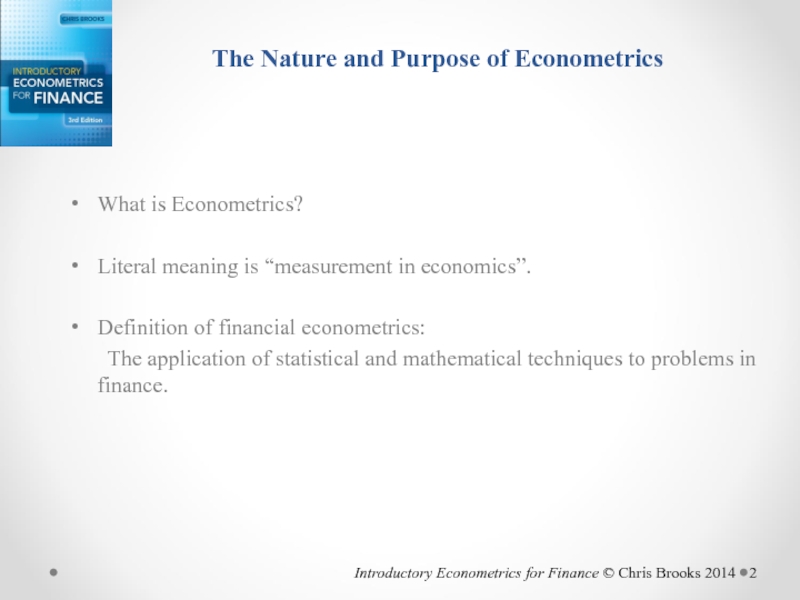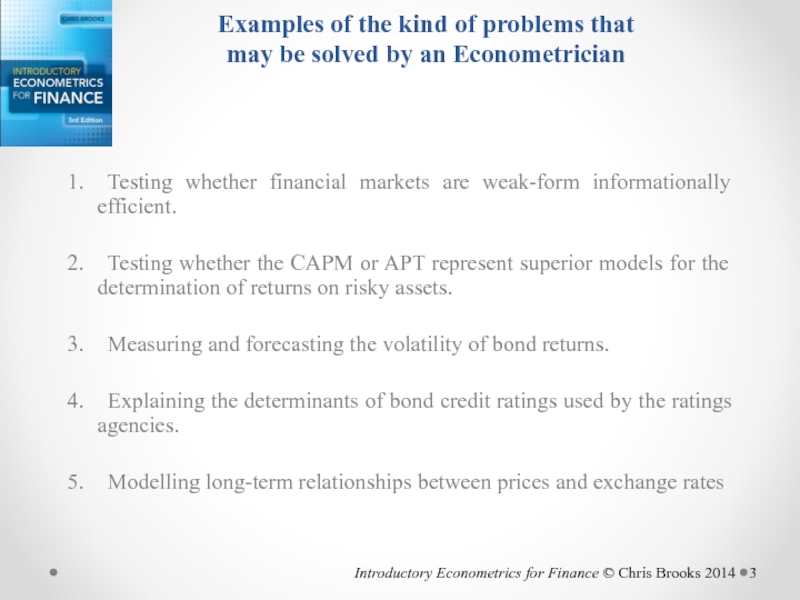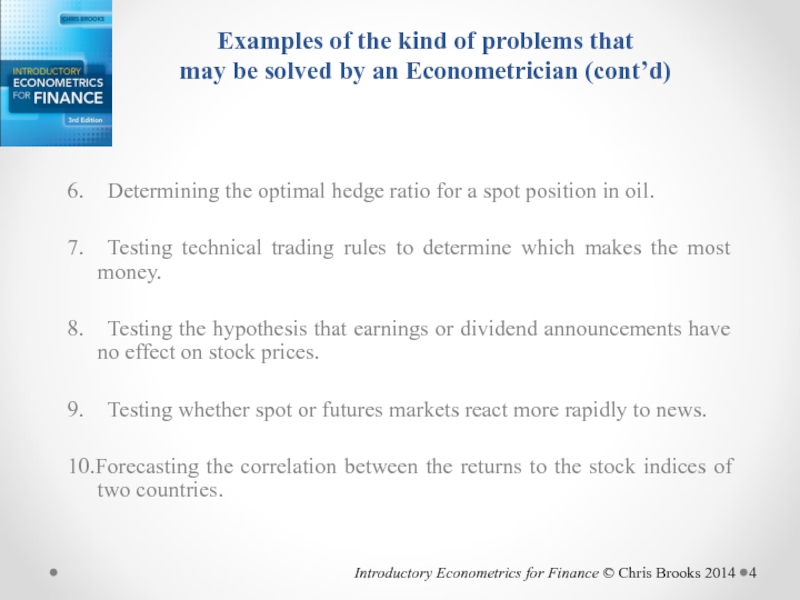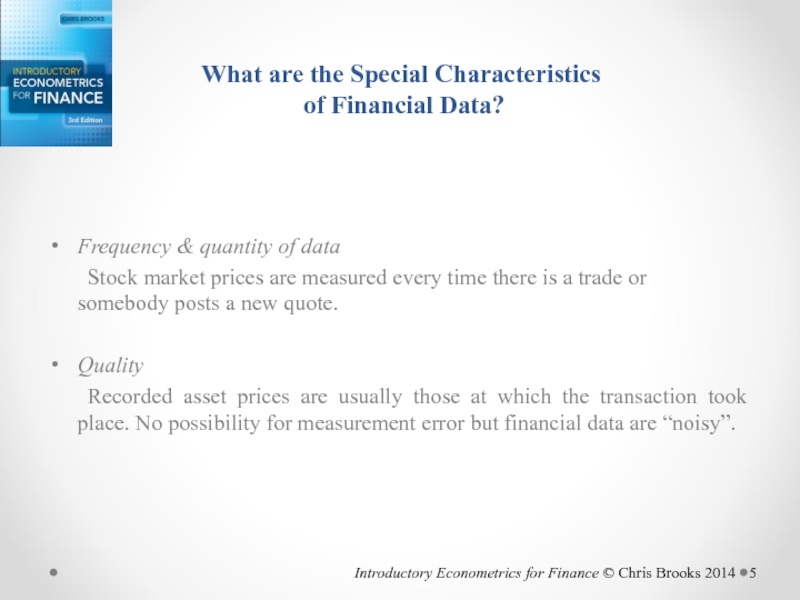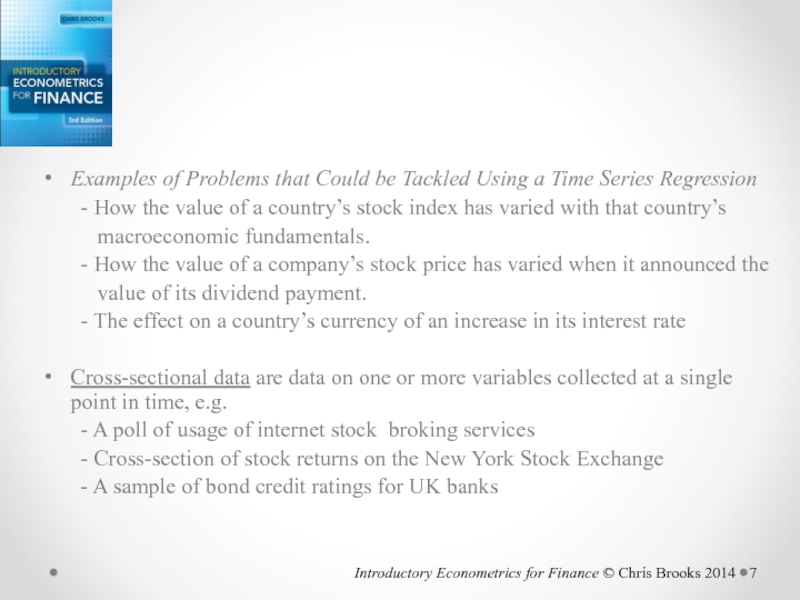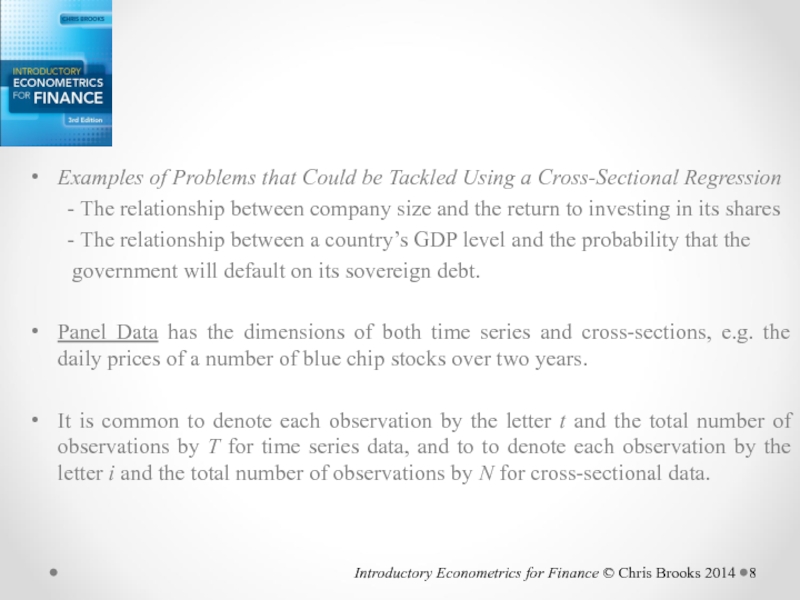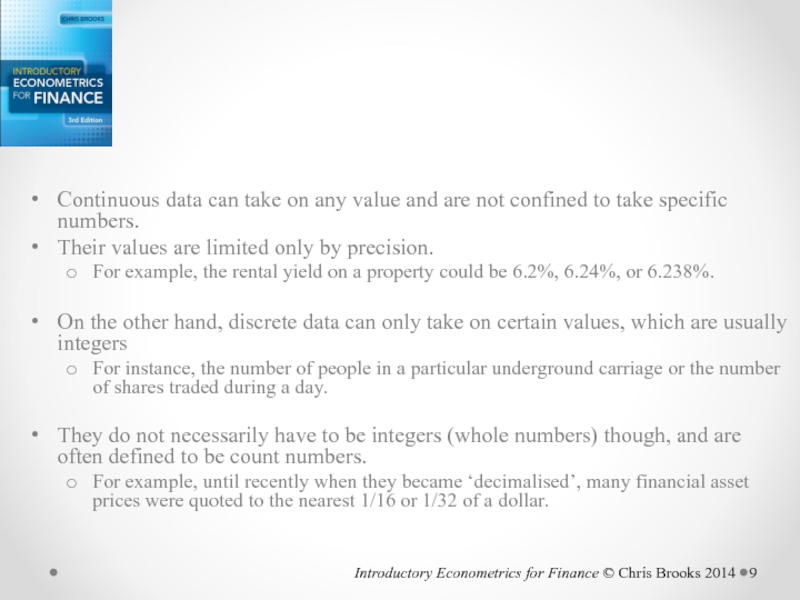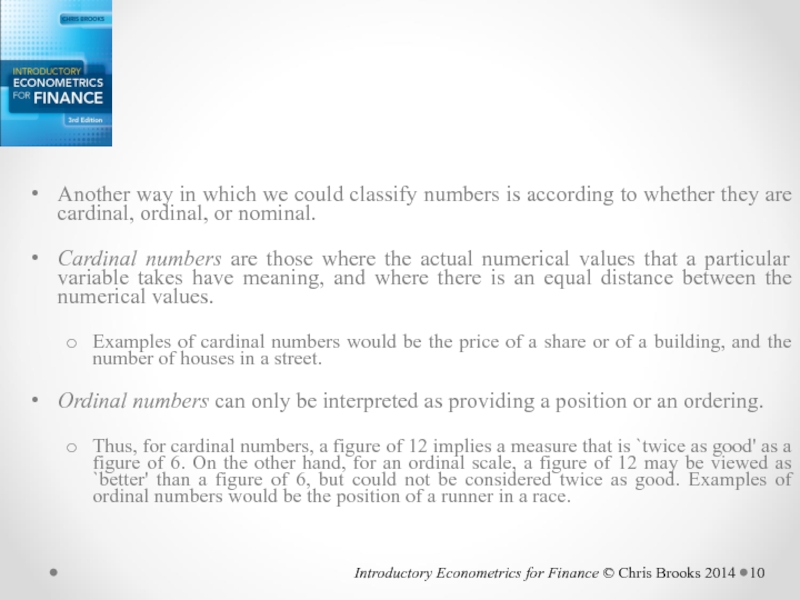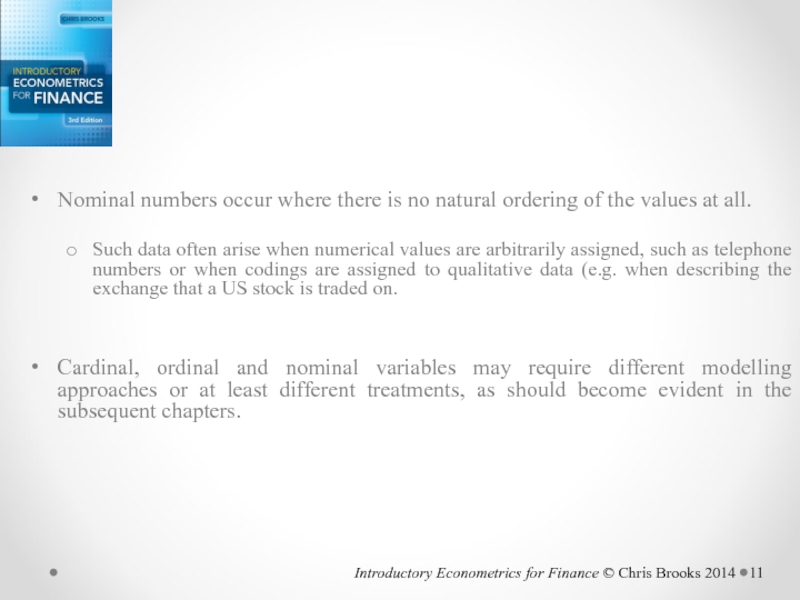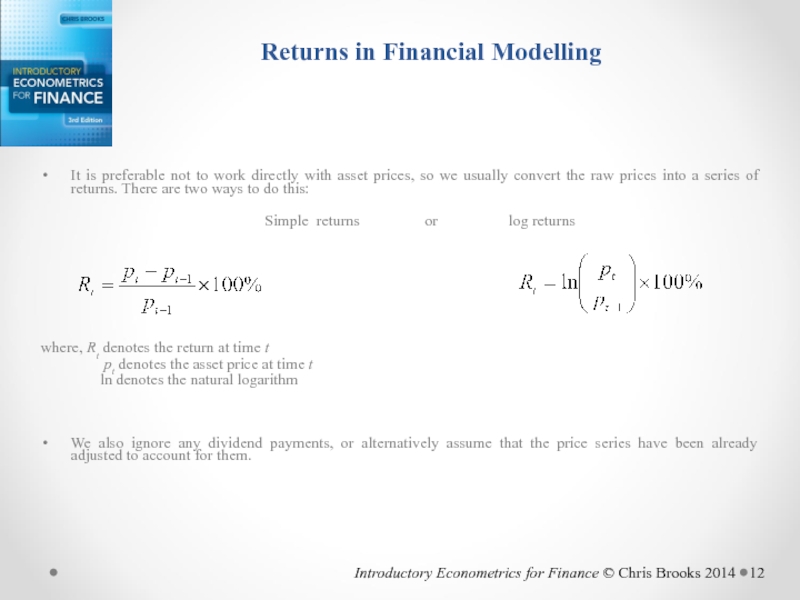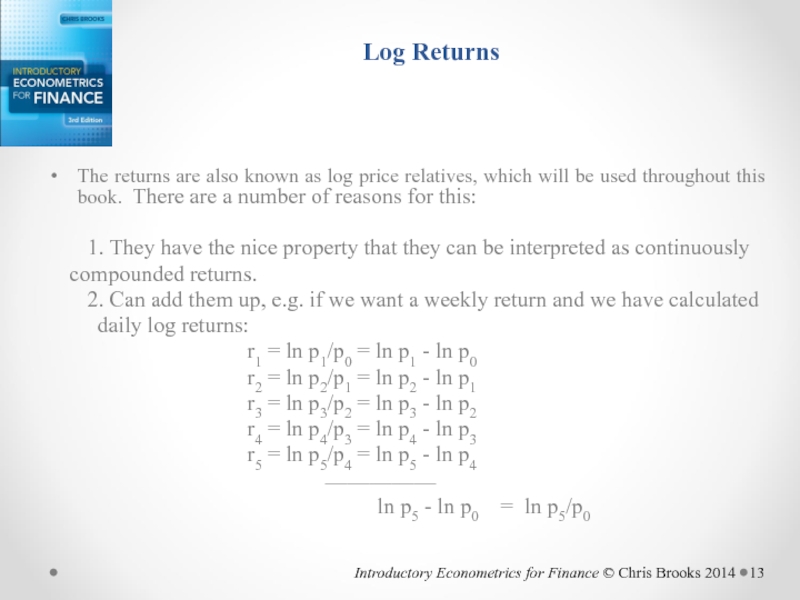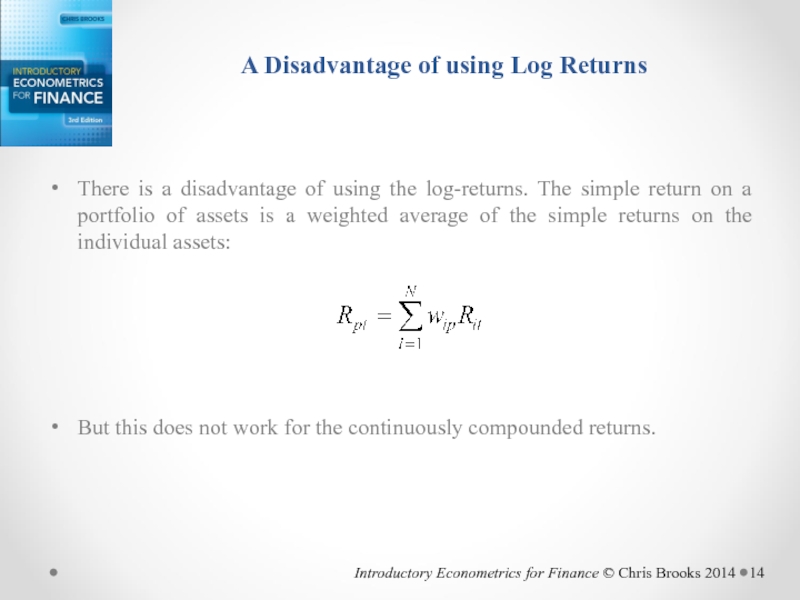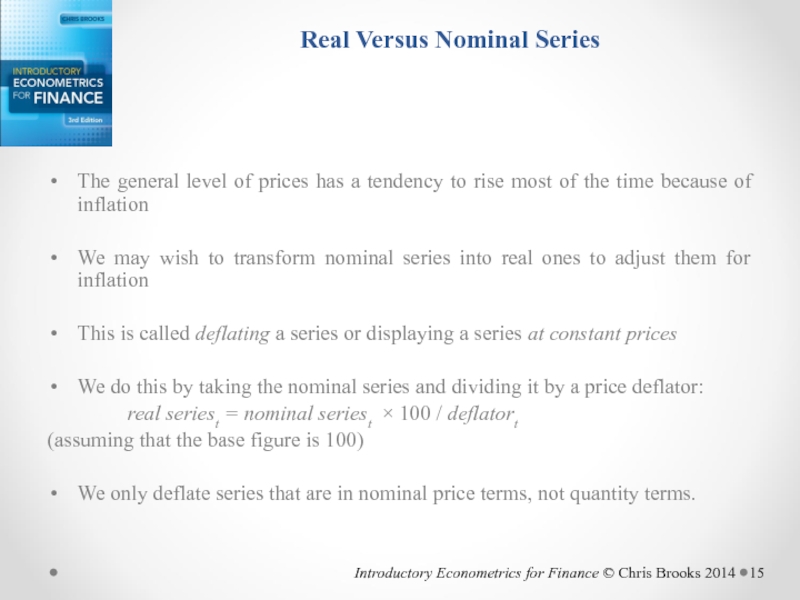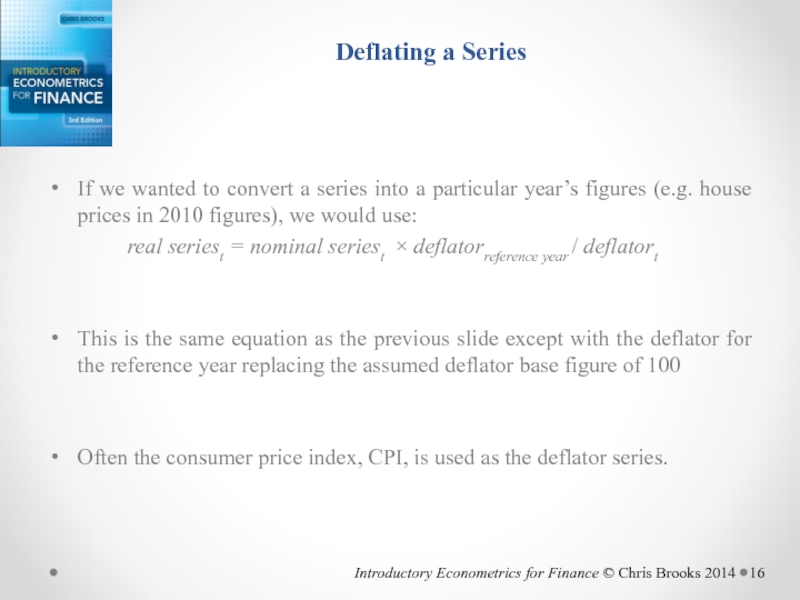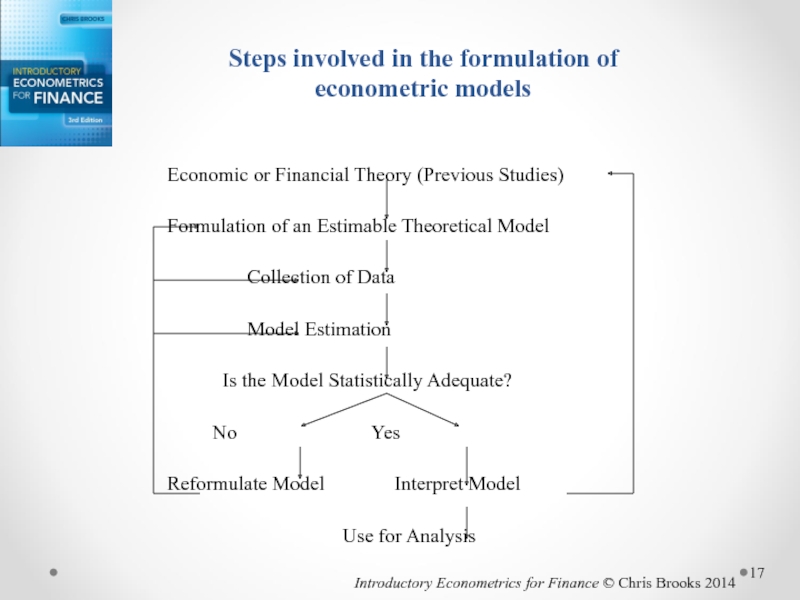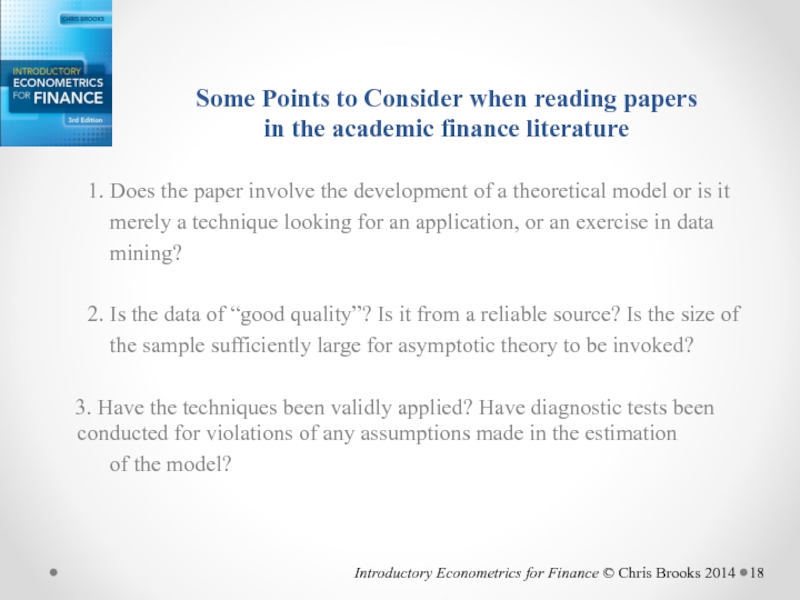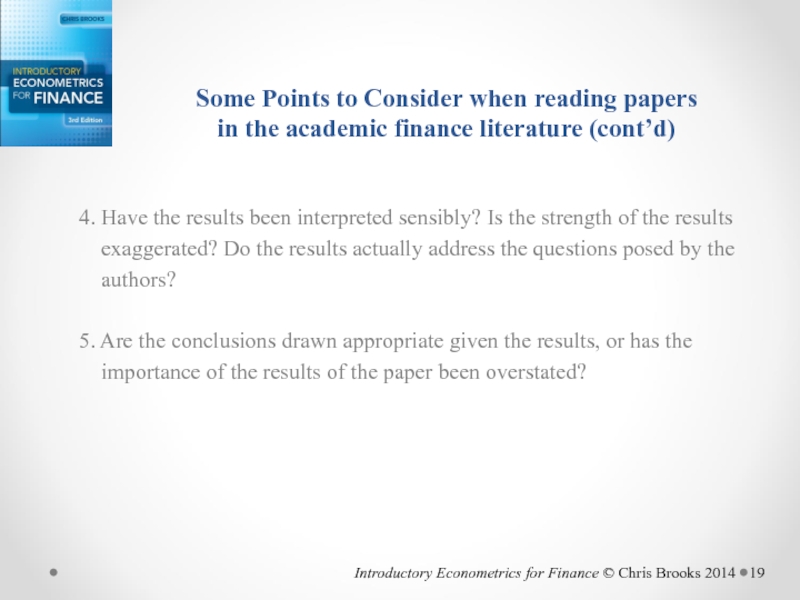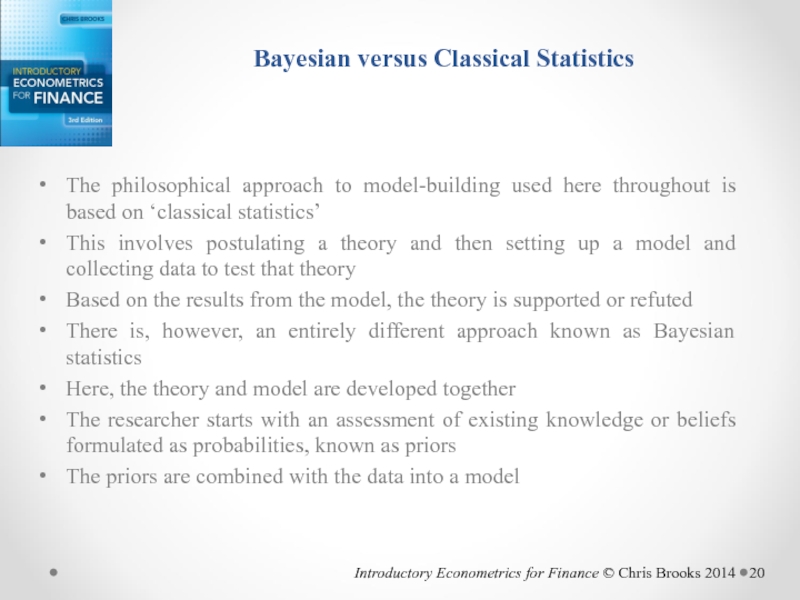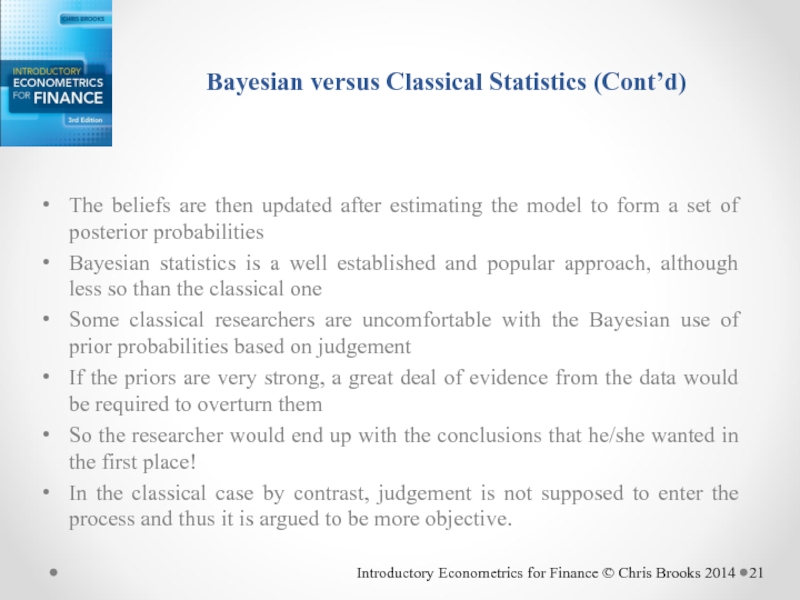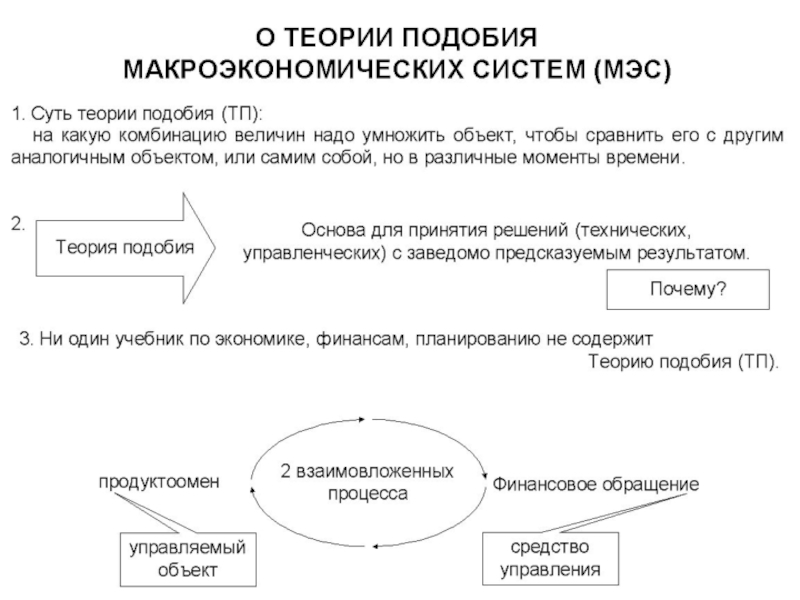- Главная
- Разное
- Дизайн
- Бизнес и предпринимательство
- Аналитика
- Образование
- Развлечения
- Красота и здоровье
- Финансы
- Государство
- Путешествия
- Спорт
- Недвижимость
- Армия
- Графика
- Культурология
- Еда и кулинария
- Лингвистика
- Английский язык
- Астрономия
- Алгебра
- Биология
- География
- Детские презентации
- Информатика
- История
- Литература
- Маркетинг
- Математика
- Медицина
- Менеджмент
- Музыка
- МХК
- Немецкий язык
- ОБЖ
- Обществознание
- Окружающий мир
- Педагогика
- Русский язык
- Технология
- Физика
- Философия
- Химия
- Шаблоны, картинки для презентаций
- Экология
- Экономика
- Юриспруденция
The Nature and Purpose of Econometric презентация
Содержание
- 1. The Nature and Purpose of Econometric
- 2. The Nature and Purpose of Econometrics
- 3. Examples of the kind of problems that
- 4. Examples of the kind of problems that
- 5. What are the Special Characteristics of
- 6. Types of Data and Notation
- 7. Time Series versus Cross-sectional Data Examples
- 8. Cross-sectional and Panel Data Examples of
- 9. Continuous and Discrete Data Continuous
- 10. Cardinal, Ordinal and Nominal Numbers
- 11. Cardinal, Ordinal and Nominal Numbers (Cont’d)
- 12. Returns in Financial Modelling It is preferable
- 13. Log Returns The returns are also known
- 14. A Disadvantage of using Log Returns
- 15. Real Versus Nominal Series The general
- 16. Deflating a Series If we wanted
- 17. Steps involved in the formulation of
- 18. Some Points to Consider when reading papers
- 19. Some Points to Consider when reading papers
- 20. Bayesian versus Classical Statistics The philosophical
- 21. Bayesian versus Classical Statistics (Cont’d) The
Слайд 2
The Nature and Purpose of Econometrics
What is Econometrics?
Literal meaning is “measurement
Definition of financial econometrics:
The application of statistical and mathematical techniques to problems in finance.
Introductory Econometrics for Finance © Chris Brooks 2014
Слайд 3Examples of the kind of problems that may be solved by
1. Testing whether financial markets are weak-form informationally efficient.
2. Testing whether the CAPM or APT represent superior models for the determination of returns on risky assets.
3. Measuring and forecasting the volatility of bond returns.
4. Explaining the determinants of bond credit ratings used by the ratings agencies.
5. Modelling long-term relationships between prices and exchange rates
Introductory Econometrics for Finance © Chris Brooks 2014
Слайд 4Examples of the kind of problems that may be solved by
6. Determining the optimal hedge ratio for a spot position in oil.
7. Testing technical trading rules to determine which makes the most money.
8. Testing the hypothesis that earnings or dividend announcements have no effect on stock prices.
9. Testing whether spot or futures markets react more rapidly to news.
10.Forecasting the correlation between the returns to the stock indices of two countries.
Introductory Econometrics for Finance © Chris Brooks 2014
Слайд 5What are the Special Characteristics
of Financial Data?
Frequency & quantity of
Stock market prices are measured every time there is a trade or somebody posts a new quote.
Quality
Recorded asset prices are usually those at which the transaction took place. No possibility for measurement error but financial data are “noisy”.
Introductory Econometrics for Finance © Chris Brooks 2014
Слайд 6 Types of Data and Notation
There are 3 types of data
1. Time series data
2. Cross-sectional data
3. Panel data, a combination of 1. & 2.
The data may be quantitative (e.g. exchange rates, stock prices, number of shares outstanding), or qualitative (e.g. day of the week).
Examples of time series data
Series Frequency
GNP or unemployment monthly, or quarterly
government budget deficit annually
money supply weekly
value of a stock market index as transactions occur
Introductory Econometrics for Finance © Chris Brooks 2014
Слайд 7Time Series versus Cross-sectional Data
Examples of Problems that Could be Tackled
- How the value of a country’s stock index has varied with that country’s
macroeconomic fundamentals.
- How the value of a company’s stock price has varied when it announced the
value of its dividend payment.
- The effect on a country’s currency of an increase in its interest rate
Cross-sectional data are data on one or more variables collected at a single point in time, e.g.
- A poll of usage of internet stock broking services
- Cross-section of stock returns on the New York Stock Exchange
- A sample of bond credit ratings for UK banks
Introductory Econometrics for Finance © Chris Brooks 2014
Слайд 8Cross-sectional and Panel Data
Examples of Problems that Could be Tackled Using
- The relationship between company size and the return to investing in its shares
- The relationship between a country’s GDP level and the probability that the
government will default on its sovereign debt.
Panel Data has the dimensions of both time series and cross-sections, e.g. the daily prices of a number of blue chip stocks over two years.
It is common to denote each observation by the letter t and the total number of observations by T for time series data, and to to denote each observation by the letter i and the total number of observations by N for cross-sectional data.
Introductory Econometrics for Finance © Chris Brooks 2014
Слайд 9Continuous and Discrete Data
Continuous data can take on any value and
Their values are limited only by precision.
For example, the rental yield on a property could be 6.2%, 6.24%, or 6.238%.
On the other hand, discrete data can only take on certain values, which are usually integers
For instance, the number of people in a particular underground carriage or the number of shares traded during a day.
They do not necessarily have to be integers (whole numbers) though, and are often defined to be count numbers.
For example, until recently when they became ‘decimalised’, many financial asset prices were quoted to the nearest 1/16 or 1/32 of a dollar.
Introductory Econometrics for Finance © Chris Brooks 2014
Слайд 10Cardinal, Ordinal and Nominal Numbers
Another way in which we could classify
Cardinal numbers are those where the actual numerical values that a particular variable takes have meaning, and where there is an equal distance between the numerical values.
Examples of cardinal numbers would be the price of a share or of a building, and the number of houses in a street.
Ordinal numbers can only be interpreted as providing a position or an ordering.
Thus, for cardinal numbers, a figure of 12 implies a measure that is `twice as good' as a figure of 6. On the other hand, for an ordinal scale, a figure of 12 may be viewed as `better' than a figure of 6, but could not be considered twice as good. Examples of ordinal numbers would be the position of a runner in a race.
Introductory Econometrics for Finance © Chris Brooks 2014
Слайд 11Cardinal, Ordinal and Nominal Numbers (Cont’d)
Nominal numbers occur where there is
Such data often arise when numerical values are arbitrarily assigned, such as telephone numbers or when codings are assigned to qualitative data (e.g. when describing the exchange that a US stock is traded on.
Cardinal, ordinal and nominal variables may require different modelling approaches or at least different treatments, as should become evident in the subsequent chapters.
Introductory Econometrics for Finance © Chris Brooks 2014
Слайд 12Returns in Financial Modelling
It is preferable not to work directly with
Simple returns or log returns
where, Rt denotes the return at time t
pt denotes the asset price at time t
ln denotes the natural logarithm
We also ignore any dividend payments, or alternatively assume that the price series have been already adjusted to account for them.
Introductory Econometrics for Finance © Chris Brooks 2014
Слайд 13Log Returns
The returns are also known as log price relatives, which
1. They have the nice property that they can be interpreted as continuously
compounded returns.
2. Can add them up, e.g. if we want a weekly return and we have calculated
daily log returns:
r1 = ln p1/p0 = ln p1 - ln p0
r2 = ln p2/p1 = ln p2 - ln p1
r3 = ln p3/p2 = ln p3 - ln p2
r4 = ln p4/p3 = ln p4 - ln p3
r5 = ln p5/p4 = ln p5 - ln p4
⎯⎯⎯⎯⎯
ln p5 - ln p0 = ln p5/p0
Introductory Econometrics for Finance © Chris Brooks 2014
Слайд 14A Disadvantage of using Log Returns
There is a disadvantage of using
But this does not work for the continuously compounded returns.
Introductory Econometrics for Finance © Chris Brooks 2014
Слайд 15Real Versus Nominal Series
The general level of prices has a tendency
We may wish to transform nominal series into real ones to adjust them for inflation
This is called deflating a series or displaying a series at constant prices
We do this by taking the nominal series and dividing it by a price deflator:
real seriest = nominal seriest × 100 / deflatort
(assuming that the base figure is 100)
We only deflate series that are in nominal price terms, not quantity terms.
Introductory Econometrics for Finance © Chris Brooks 2014
Слайд 16Deflating a Series
If we wanted to convert a series into a
real seriest = nominal seriest × deflatorreference year / deflatort
This is the same equation as the previous slide except with the deflator for the reference year replacing the assumed deflator base figure of 100
Often the consumer price index, CPI, is used as the deflator series.
Introductory Econometrics for Finance © Chris Brooks 2014
Слайд 17Steps involved in the formulation of
econometric models
Economic or Financial Theory
Formulation of an Estimable Theoretical Model
Collection of Data
Model Estimation
Is the Model Statistically Adequate?
No Yes
Reformulate Model Interpret Model
Use for Analysis
Introductory Econometrics for Finance © Chris Brooks 2014
Слайд 18Some Points to Consider when reading papers in the academic finance
1. Does the paper involve the development of a theoretical model or is it
merely a technique looking for an application, or an exercise in data
mining?
2. Is the data of “good quality”? Is it from a reliable source? Is the size of
the sample sufficiently large for asymptotic theory to be invoked?
3. Have the techniques been validly applied? Have diagnostic tests been conducted for violations of any assumptions made in the estimation
of the model?
Introductory Econometrics for Finance © Chris Brooks 2014
Слайд 19Some Points to Consider when reading papers in the academic finance
4. Have the results been interpreted sensibly? Is the strength of the results
exaggerated? Do the results actually address the questions posed by the
authors?
5. Are the conclusions drawn appropriate given the results, or has the
importance of the results of the paper been overstated?
Introductory Econometrics for Finance © Chris Brooks 2014
Слайд 20Bayesian versus Classical Statistics
The philosophical approach to model-building used here throughout
This involves postulating a theory and then setting up a model and collecting data to test that theory
Based on the results from the model, the theory is supported or refuted
There is, however, an entirely different approach known as Bayesian statistics
Here, the theory and model are developed together
The researcher starts with an assessment of existing knowledge or beliefs formulated as probabilities, known as priors
The priors are combined with the data into a model
Introductory Econometrics for Finance © Chris Brooks 2014
Слайд 21Bayesian versus Classical Statistics (Cont’d)
The beliefs are then updated after estimating
Bayesian statistics is a well established and popular approach, although less so than the classical one
Some classical researchers are uncomfortable with the Bayesian use of prior probabilities based on judgement
If the priors are very strong, a great deal of evidence from the data would be required to overturn them
So the researcher would end up with the conclusions that he/she wanted in the first place!
In the classical case by contrast, judgement is not supposed to enter the process and thus it is argued to be more objective.
Introductory Econometrics for Finance © Chris Brooks 2014

